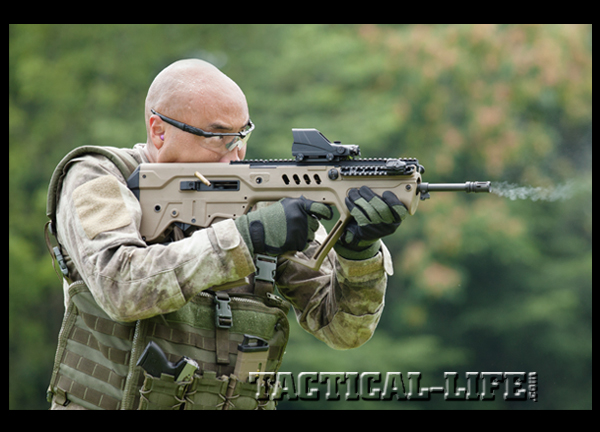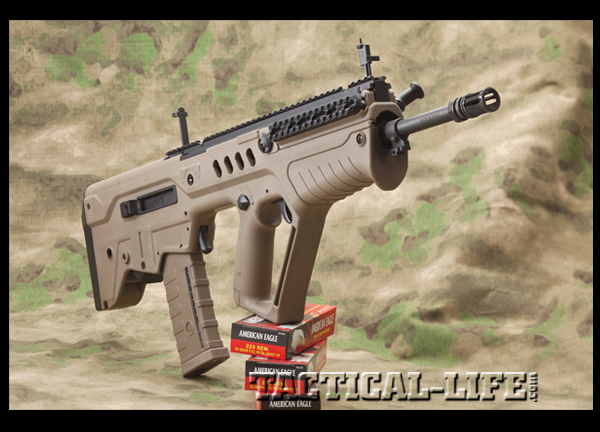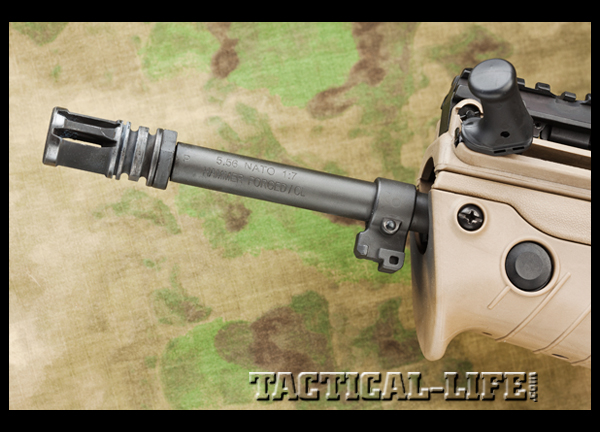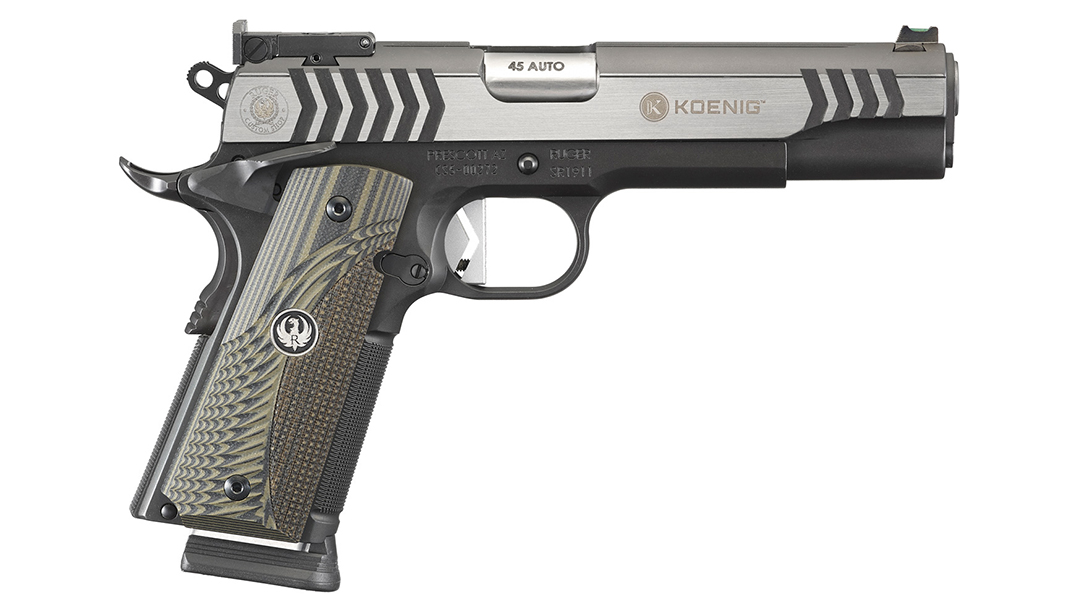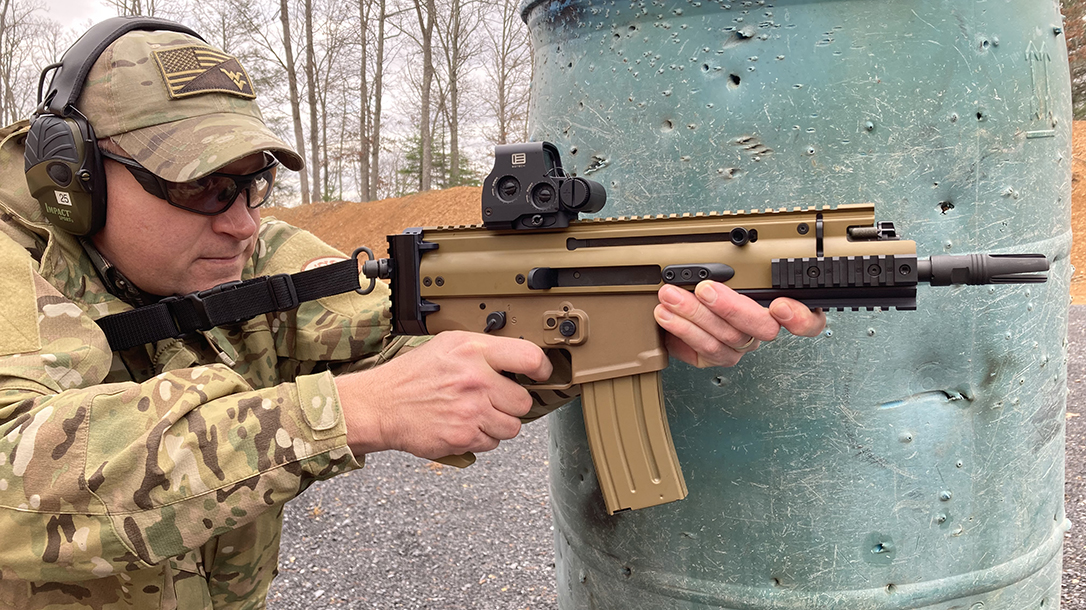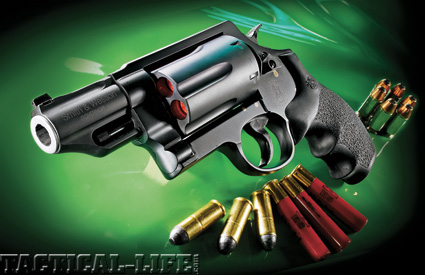In the upcoming March 2014 issue of Rifle Firepower, author Wilson Langston discusses the Israeli Weapons Industries (IWI) Tavor SAR, which he was able to test and hunt coyotes with. Originally built for use by the Israeli Defense Forces, the compact Tavor SAR is a civilian-ready version ready for American. Several models are available, and customers can choose either a 16- or 18-inch barrel, a flattop for mounting optics or the SAR-IDF (which comes with a Mepro 21 reflex sight) and a black of Flat Dark Earth finish. Langston chose an 18-inch-barreled flattop model with a Flat Dark Earth finish.
Regarding his coyote hunt, Langston writes, “Coyotes have extremely good eyesight in addition to incredible other senses, especially hearing and smell. The Tavor SAR was a good fit owing to its compact nature, making it easy to maneuver in the small blind. Less than 10 minutes after I started calling, our first taker appeared. He broke the tree line about 100 yards out, at a full run in the direction of the decoy. For the sake of my decoy, I sent the round before he made it. It was placed precisely where I wanted, putting him in a pile mid-stride.”
How many more coyotes did Langston bag? And how did the Tavor SAR perform at the range? To learn more, check out the March 2014 issue of Rifle Firepower, available on newsstands and digitally December 17, 2013. To subscribe, go to /.










